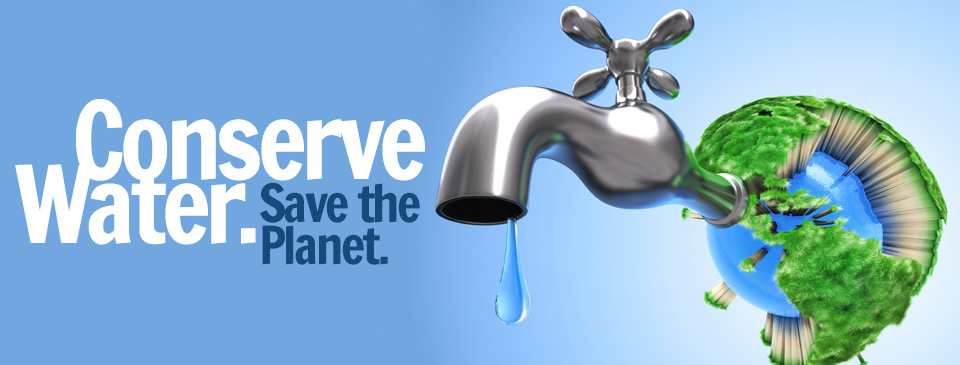Water Conservation in an Office Environment: Best Practices
 The water bills can be quite staggering in the office environment along with the fact the most if it is unnecessarily wasted. We have compiled an extensive catalogue of the best practices possible when water conservation is concerned you can start using in no time in your working space. Follow our lead as we go through the matters of audits and benchmarks, followed by building, employee and equipment related tips.
The water bills can be quite staggering in the office environment along with the fact the most if it is unnecessarily wasted. We have compiled an extensive catalogue of the best practices possible when water conservation is concerned you can start using in no time in your working space. Follow our lead as we go through the matters of audits and benchmarks, followed by building, employee and equipment related tips.
Audits and benchmarks
To begin with, the company’s water using patterns should be benchmarked against the industry standards if possible. These reports basically create an estimate about the average water consumption pertaining to certain industrial subdivision. They are employed as a means for peer comparisons of momentary water use tendencies.
Carry out an audit on the premises to measure the quantity of used water. The more you know about the water usage, the more geared up you’ll become for devising superior saving strategy. Realistic saving goals outline should be made to act as the benchmark value for the next measuring.
Hiring renowned experts in the specific field to cover this step is definitely advised, and the cost of their services will be repaid promptly through economical expenditure. Establish whether the following options are viable in your company’s case:
- Water flow reduction
- Equipment modification or installment of water-preserving apertures
- Replacement of current apparatus with its more efficient counterpart
- The treatment of water (reuse and recycling)
- Shift to waterless practice
It is recommendable to take a page out of the book of advanced peers in the industry and learn from their success records. These case studies will help separate the options into pros and cons, and pinpoint the most effective solutions concerning sustainability and costs. Look out for these in their annual or sustainability water reports.
Edifices
When office buildings are in question, there is an abundance of mechanisms that can be exploited in business water utilisation. Primarily, companies need water conserving fixtures in showering and restroom areas. Facilities in the industry usually have tap water use for flushing the toilet, hand-washing sinks and showerhead setups. These carry massive potential for novel water-saving strategies. This is a list of common retrofitting possibilities:
- Highly-efficient urinals and toilets
- Aerators in hand washing sing settings
- Top-conserving showerheads
- a) On site laundry rooms
The present cloth washing facilities some companies have are also a promising sector for water cuts. A number of commercial and industrial facilities spend a sizeable amounts of tap water for laundry cleaning procedure. Multiload types are best when separately adjusted on efficient mode for every cycle. The so-called tunnel batch washer befits the large-scale laundry washups perfectly, if the conditions permit it.
- b) Kitchen section capacities
In a recent chat with a reputed Sydney-based commercial plumber, it was brought to my attention that kitchen area is a great candidate for water-saving in pretty much every standard office location. These are the methods for superior use of kitchen water holding elements:
- Dishes should be rinsed with pre-dishwasher dispersing valve
- The dishwasher should ideally conform to eco-energy standards
- A constant-flow sink should be paired with inline spout controller (seek the newest models)
- Boilerless apertures with food steamers are the high-end options to consider
- Strainers minimise water input in rubbish-disposing devices
Water saving corporate culture – Employees
The personnel has to be acquainted with water-preserving policy and be patiently educated about the essentially of water use minimization. Nurture and spread this culture among the employees and try to get them to realise themselves how important this is, for the planet and their firm alike.
To convert the wasters into employees that are proud about this company feature, take this path: Recognise and commend the initiations of such green practices and introduce the resource preservation in reports of performance, particularly for line managers.
The array of devices
Water is frequently a secret agent in some industrial equipment that deliver cooling sensation. This mechanism is available in air cooling technology. Weigh the benefits and downsides for your business prior to deciding to switch to this. Two factors can aid in deliberation, performance and efficient energy consumption. The devices in this range include:
- Vacuum pumps
- Ice machines
- Air compressors
- Hydraulic items
- Fridge condensing unit
To instill a true water saving culture and practice in the office, you need proper support from the employees and a selection of resource preserving fixtures. The more – the better, just verify that the additions are complementary. Before you take a pick from our list and commence your cost-effective, green journey, invest in a professional and sector-specific audit. The benchmark report you’d get will guide you through improvement process more effectively. Lastly, go ahead and see what the others are doing, they might be onto something revolutionary.
Category: Business




